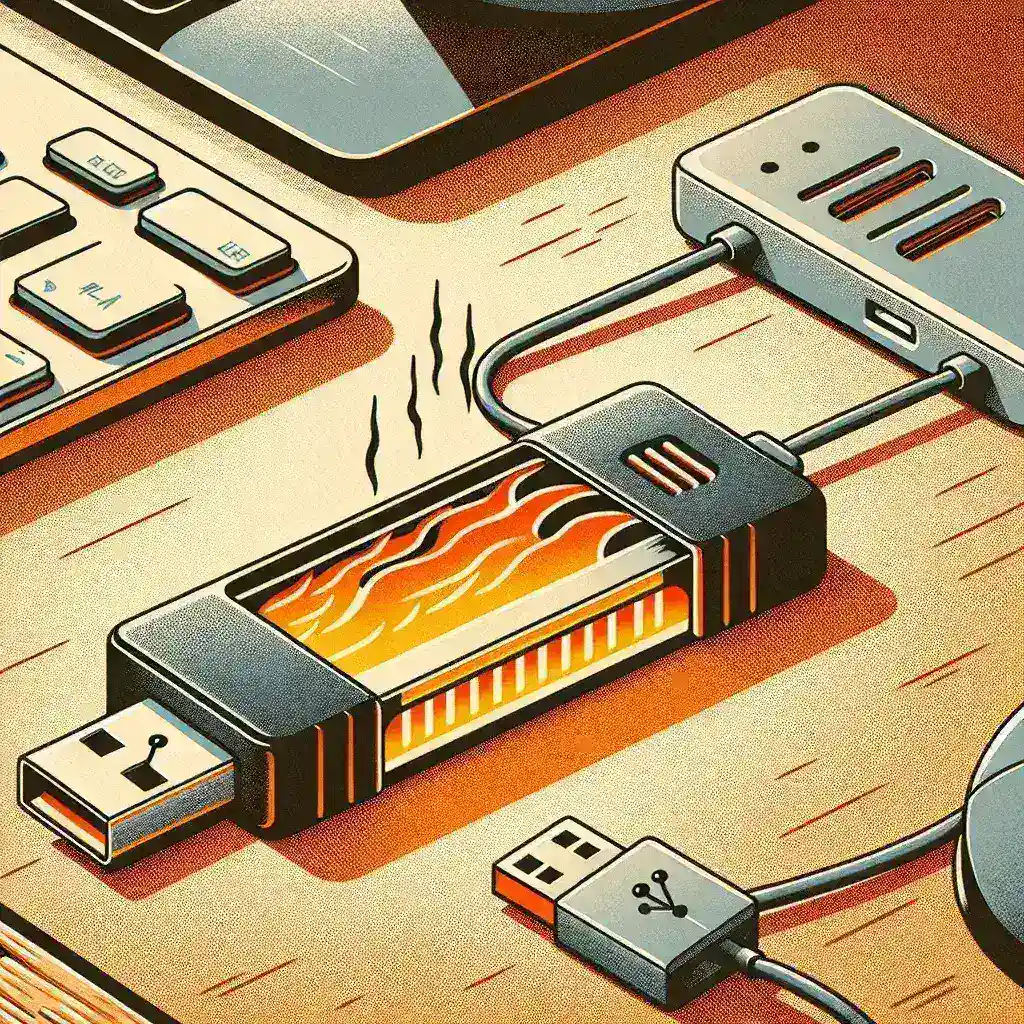When using USB hubs to expand connectivity options for your devices, users often notice that their flash drives can become unusually warm. Although it may seem alarming, it is essential to understand the reasons behind this heat generation and how to manage it effectively. In this article, we will explore the factors influencing the temperature of a flash drive when connected to a USB hub, the potential risks associated with overheating, and practical solutions to ensure safe operation.
| Factor | Description |
|---|---|
| Power Supply | Insufficient power supply can lead to excess heat generation in a flash drive. |
| Data Transfer Rate | High data transfer rates can cause increased energy consumption and heat. |
| Hub Quality | Low-quality USB hubs may not regulate power effectively, causing overheating. |
| Operation Time | Extended use can lead to a buildup of heat within the flash drive. |
| Environment | External temperatures can affect the heat dissipation of a flash drive. |
Understanding Why Flash Drives Get Hot
Flash drives, like all electronic devices, generate heat as they operate. This heat can become noticeable when the drive is in use, especially if it is connected through a USB hub. There are several key factors contributing to this phenomenon:
1. Power Consumption
Flash drives draw power through their USB connection. When connected to a USB hub, especially if the hub is powered by a single source without sufficient power distribution, it can lead to inadequate power supply. This condition can cause the flash drive to work harder than usual, generating excessive heat.
2. Data Transfer Activities
Engaging in data-intensive activities such as transferring large files or performing read/write operations can increase the energy consumption of a flash drive. Consequently, higher energy consumption leads to a corresponding increase in temperature.
3. Quality of the USB Hub
The quality and specifications of the USB hub play a significant role in how power is managed among connected devices. Non-powered or low-quality hubs may lack the necessary safeguards to distribute power evenly, making it hard for connected devices like flash drives to function optimally without generating heat.
4. Extended Usage
Using the flash drive for prolonged periods without breaks can lead to heat buildup. Frequent heating without adequate cooling time will likely cause the inner components of the flash drive to become hotter.
5. Ambient Temperature
The environment in which the flash drive and USB hub operate also impacts heat management. Hotter surroundings may compromise the device’s ability to dissipate heat, leading to higher operating temperatures.
Potential Risks of Overheating
While some heat generation is normal, excessive heat can lead to various problems:
- Data Corruption: High temperatures can cause flash memory cells to malfunction, resulting in data loss or corruption.
- Hardware Damage: Prolonged exposure to extreme heat can damage the internal components of the flash drive, potentially rendering it unusable.
- Reduced Lifespan: Constant overheating can shorten the lifespan of the flash drive by accelerating wear and tear.
- Safety Hazards: In rare instances, extreme overheating may lead to burning or melting, posing safety risks.
How to Prevent Overheating
To ensure your flash drive remains at a healthy operating temperature, consider the following preventive measures:
1. Use Powered USB Hubs
Select high-quality powered USB hubs that supply adequate power to connected devices. Powered hubs minimize the workload on flash drives, reducing the chances of overheating.
2. Monitor Usage
Be mindful of how long you are using your flash drive. If you are transferring large files, take regular breaks to allow the device to cool down.
3. Avoid High-Intensity Operations
Avoid engaging in data-heavy operations on the flash drive while it is connected to the USB hub. When possible, transfer files in smaller batches, instead of all at once, to minimize heat generation.
4. Improve Ventilation
Ensure that the USB hub and flash drive are situated in a well-ventilated area. Avoid enclosed spaces that trap heat, opting for open environments that promote airflow.
5. Check for Firmware Updates
Some manufacturers release firmware updates that could optimize device performance. Check the manufacturer’s website for any updates that could improve heat management.
Conclusion
Understanding the reasons why your flash drive gets hot when connected to a USB hub is crucial for maintaining the health and integrity of your data storage device. While some heat generation is a standard part of operation, monitoring usage, ensuring proper power supply, and maintaining good ventilation can significantly reduce the chances of overheating. By taking these steps, you can ensure your flash drive remains safe, operational, and efficient for years to come.

